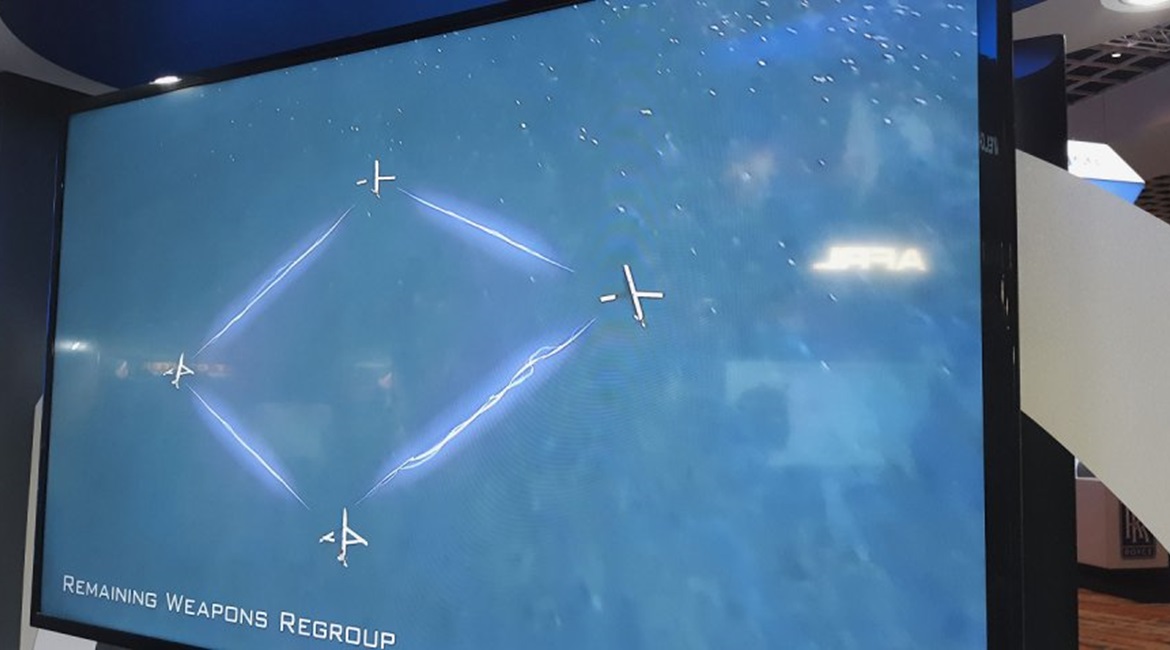
The US Air Force Research Laboratory (AFRL) is rethinking its approach to the Golden Horde networked collaborative weapons programme and the lab’s commander has a meeting with a key stakeholder on 17 September to determine the path forward.
Golden Horde, one of the US Air Force’s (USAF’s) top science and technology (S&T) priorities, had a demonstration previously scheduled for late 2020. Golden Horde is a group of technologies the service is evaluating for networked collaborative autonomous capabilities within existing weapon systems.

Collaborative Small Diameter Bomb 1s (CSDB-1s) regroup during a video of a Golden Horde demonstration seen in February 2020. The USAF is rethinking its approach to Golden Horde. (Pat Host/Janes)
The service was to experiment with how to have a group of weapons talk and interact with one another and pass data back and forth into a network. This would allow them to better prosecute targets and better prioritise.
Chris Ristich, director of the USAF transformational capabilities office and director of the strategic development planning and experimentation office, told reporters on 16 September during the Air Force Association’s (AFA’s) annual conference that the USAF is debating two things.
These are whether the USAF is looking at simply transitioning a single capability to a single weapon, or how to get Golden Horde into its entire ecosystem of weapons development and make it a foundational element of all of its future weapons. This, he said, could create a robust ability to design, experiment, and test through a software integration lab.
“That is, again, what is shifting milestones and deliverables around,” Ristich said. “To get that right and get Dr (Will) Roper’s buy-in to the acquisition strategy.”
Looking to read the full article?
Gain unlimited access to Janes news and more...






